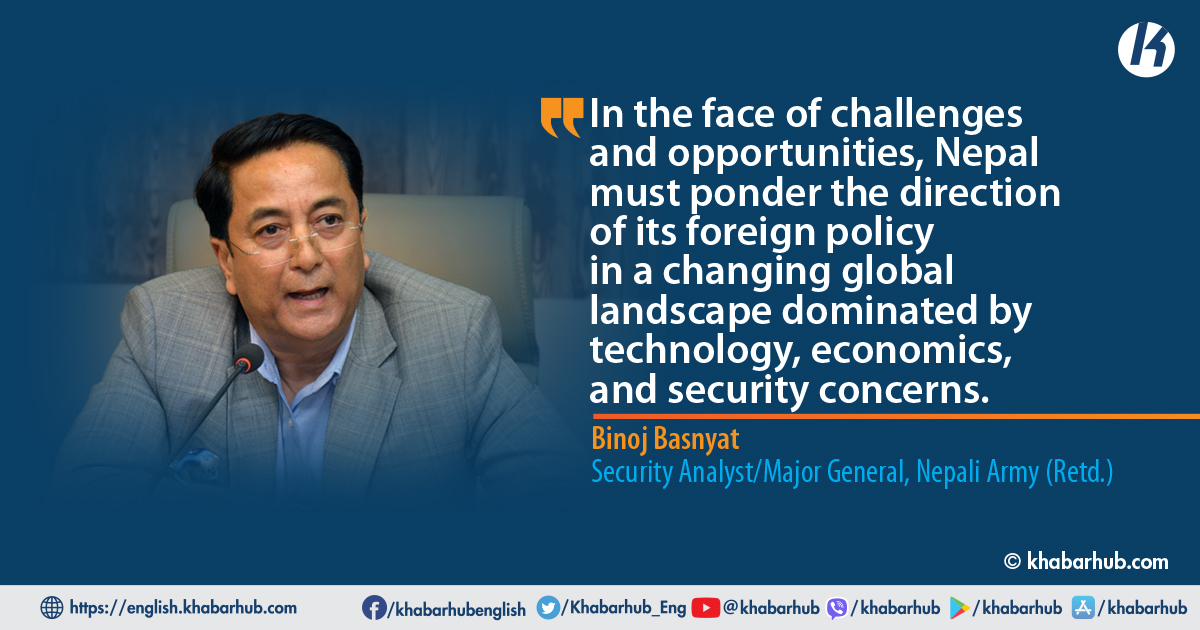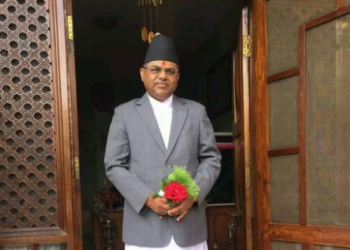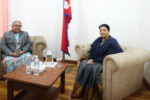The war in Ukraine is the bloodiest hostility in Europe since World War II, which has not only influenced and distorted the pattern and design of warfare, triggering humanitarian and social crises, decelerated economic growth, disrupted the global supply of commodities, abruptly increasing food and energy prices, but has also been a turning point in foreign policy and world affairs.
As the Indo-Pacific Region returns to be one of the most dynamic geopolitical regions in the world, the search for foreign policy is underway.
With a new era for international politics or Cold War 2.0 on the horizon, Non-Alignment (NA) 2.0 is on the table, with mounting maritime disputes, strengthening concerns about economics, expansion of military build-up and cooperation, and an increase in political trends.
The world is divided, with large democracies like Brazil, India, Indonesia, Mexico, and South Africa taking a neutral stance or being among the thirty-five nations that abstained in the United Nations Security Council voting in favor of condemning Russia’s actions in Resolution ES/11/1, the initial resolution on the Russian invasion of Ukraine, which demanded Russian withdrawal from Ukraine.
The increase in India’s diplomatic engagement in the region is noteworthy, with defense and economic undertakings with almost all the nations of the Indo-Pacific region.
The resolution was passed with an overwhelming vote of 143 in favor and five against. Of these large democratic countries, three are part of Brazil, Russia, India, China, and South Africa (BRICS). India, China, Kazakhstan, Kyrgyzstan, Tajikistan, Pakistan, and Uzbekistan (seven) are members of the nine-member nations Shanghai Cooperation Organisation (SCO) and are part of those that abstained. Ethiopia and Iran, who also abstained, have been invited to be part of BRICS.
Chinese and Russian cleavage has created a divide within the informal grouping of seven of the world’s advanced economies (G7) and Quadrilateral Security Dialogue (QUAD) nations between democracies and authoritarianism. A doctrine needs to be necessitated for Nepal and other landlocked, island, and small countries in the making of a new century.
When the world is ever-changing, what does it mean for Nepal and other like-minded nations?
Global Diplomacy
The fastest-growing economies in the world lie in the Indian Ocean. These economies link both the Atlantic Ocean and the Asia-Pacific region, making the Indo-Pacific region geo-strategically imperative in the global economy and shaping the new world order.
Three strategic perspectives lie in the sea trade routes that link the Middle East, Africa, and East Asia with Europe and the US, where the bulk of the world’s maritime oil trade and approximately one-third of the total worldwide trade occurs.
Crucial passage points with high strategic values are the Strait of Malacca and Luzon Strait. If obstructed, they could cause an interruption in the world economy.
China’s political determination in the region and beyond is supported by its modernization and growing defense capabilities, including maritime abilities.
With the Belt and Road Initiative (BRI) in 2013, strategic emphasis on the ‘One China Policy’ renewed tensions between China and Taiwan, the Hong Kong National Security Law of 2020, and China’s new map with territorial claims and artificial islands in the South China Sea.
The three initiatives—the Global Development Initiative (GDI) 2021 hailed by the World Economic Forum, Global Security Initiative (GSI) 2022, and Global Civilisation Initiative (GCI) 2023—express its security-development-civilisation connect.
China could confront two-front contests from the east along the Pacific front as well as from the southeast along the Himalayan front. China’s sensitivity to the threat has re-emerged with India-US strategic convergence since 2008.
These aims to position itself in global affairs as well as build a diplomatic architecture to rival the US-led system of multilateral treaties, alliances, and institutions.
On the other hand, India has bolstered its relationship with new defense approaches, in addition to being part of the US-led QUAD and the Indian Ocean Rim Association (IORA).
NATO has increased its engagement in the Indo-Pacific region with the launching of the ‘Futures in the Indo-Pacific’ initiative on 25 Jan 2023 and the attendance of leaders of Australia, Japan, New Zealand, and the Republic of Korea for the second year in a row in the NATO members’ summit.
The just-completed Group of Twenty (G20) with President Xi’s and President Putin’s absence announced geopolitical connectivity, the India Middle-East Europe Corridor (IMEC), which goes hand in hand with the Group of Seven (G7) acknowledged assurance to ascertain new opportunities to scale the Partnership for Global Infrastructure and Investment (PGII), which encompasses geostrategic orientation. India’s security challenge is in a two-front paradox with its neighbors China and Pakistan.
The increase in India’s diplomatic engagement in the region is noteworthy, with defense and economic undertakings with almost all the nations of the Indo-Pacific region.
The Indian government announced stiffened consideration of Foreign Direct Investment from countries bordering India, a stride to safeguard its own investment in the region and control Chinese investment in Indian firms that grew fivefold between 2014 and 2019.
China’s actions on Taiwan and its ‘debt-trap diplomacy’ have unsettled the US. The US has not only expressed these concerns at the bilateral level but also the international level, for example through NATO’s Strategic Concept.
The triad ties among Japan-South Korea-US. Japan’s National Security Strategy (NSS), National Defence Strategy (NDS), and Defence Build-up Program (DBP) all were released on 16 December 2022.
On 14 June 2023, the Yoon Suk-yeol administration of South Korea issued its NSS with advances to craft Korea as a ‘global pivotal state’ that furthers an influential role in preserving liberal democracy, contributing to global prosperity, as well as strategic re-alignment with long-established allies and partners—the US and Australia—in the face of continuing North Korean missile tests and diplomatic anxieties with China.
The changing EU’s position on China, its second biggest trading power, is changing. Germany has emanated its first national security strategy, appealing to China as an emergent threat to global security, highlighting Berlin’s alteration from economic interests to geopolitics following Russia’s offensive in Ukraine.
Nepal became a member of the United Nations on December 14, 1955, and initiated bilateral relations with various countries, including the United States in April 1947, India in June 1947, France in April 1949, and China in August 1955, with a total of 181 bilateral relations established by June 23, 2023.
In the March 2022 Strategic Compass, the EU alluded to China’s increased assertiveness in the Indo-Pacific, expressing serious concerns. The EU presented its first strategy for the Indo-Pacific on 16 September 2021.
NATO has increased its engagement in the Indo-Pacific region with the launching of the ‘Futures in the Indo-Pacific’ initiative on 25 Jan 2023 and the attendance of leaders of Australia, Japan, New Zealand, and the Republic of Korea for the second year in a row in the NATO members’ summit.
The return of the strategic competition with new challenges such as cyber, space, and emerging and disruptive technologies in the international system, especially in the Indo-Pacific region, is noteworthy in global geostrategic affairs.
What does this mean for Nepal and other small nations’ foreign policy? It needs to be looked into.
Diplomatic Trail of Nepal The unification of Nepal by King Prithivi Narayan Shah in 1769 led to the establishment of ‘Jaishi Kotha’ as the first unit for foreign affairs, especially in relation to Tibet and China.
However, bilateral relations with the British did not commence until almost five decades later in 1814. The guiding themes for formulating foreign policy and adopting domestic policies during this period were “Yam between two boulders” and “Bribery is a great sin.”
These themes acknowledged Nepal’s vulnerability and emphasized the importance of maintaining cordial relations with its immediate neighbors, China and India, without antagonizing them.
During the rule of Bhimsen Thapa (1806-1837), Jaishi Kotha was renamed ‘Munshi Khana,’ and French military advisers were invited to train Nepali military personnel, indicating a preference for a relationship with France over Britain.
Prime Minister Janga Bahadur (1848-1877) reorganized foreign affairs into three units: the British India Division, Jaishi Kotha, and Munshi Captain’s Office, following a policy of appeasement toward the British rulers.
Jung Bahadur even traveled to Britain and France in 1850. This pro-British foreign policy continued throughout the Rana regime for almost 104 years until 1950, when democracy was established.
Prime Minister Chandra Shumsher restructured foreign affairs into five divisions and one associate: Jaishi Kotha, Sadar Amini Goswara, Seema Survey, India – Great Britain Division, Munshi Captain’s Office, and Singh Durbar Farmaisi Adda as an associate division.
With India gaining independence, the annexation of Tibet by China, and the establishment of democracy in Nepal, the regional geostrategic environment prompted Nepal to open up to the world and pursue an active foreign policy from 1951 to 1960.
During the 4th Summit Conference of Heads of State or Government of the NAM in Algiers in September 1973, King Birendra indirectly proposed the establishment of Nepal as a ‘Zone of Peace.’
Nepal became a member of the United Nations on December 14, 1955, and initiated bilateral relations with various countries, including the United States in April 1947, India in June 1947, France in April 1949, and China in August 1955, with a total of 181 bilateral relations established by June 23, 2023.
After World War II, the United States and the Soviet Union formed the Western bloc and the Eastern Bloc between 1945 and 1949.
This geopolitical shift paved the way for the establishment of the Non-Alignment Movement (NAM) in 1961, comprising 120 nation-states and promoting South-South cooperation.
The Non-Alignment Foreign Policy has remained a cornerstone of Nepal’s foreign affairs, even during the Panchayat regime (1961-1990). Nepal has consistently upheld principles such as sovereignty, territorial integrity, non-interference, peaceful conflict resolution, non-use of territory by foreign forces, and mutual cooperation.
In February 1975, Nepal attempted to declare itself a ‘Zone of Peace,’ receiving support from 116 nation-states. This initiative aimed to contribute to global peace and stability, potentially altering Nepal’s approach to international relations, fostering cooperation within the South Bloc, promoting South-South and North-South cooperation.
Foreign Policy Options Nepal has three foreign policy options to consider:
Active Non-Alignment (ANA) Policy: Developed in 2019 and further refined in 2020 and 2021, this policy emphasizes engagement and explores diplomatic approaches in the context of US-China rivalry.
It acknowledges the changing global landscape, where nations that once advocated Non-Alignment are adapting to transformed interests. ANA seeks to avoid succumbing to political pressures from hegemonic powers, maintaining a light-footed foreign policy that acknowledges the risks in the existing international environment.
Zone of Peace, Freedom, and Neutrality (ZOPFAN): This declaration was signed by the Foreign Ministers of ASEAN member states, including Indonesia, Malaysia, Philippines, Singapore, and Thailand, in 1971. Its purpose is to protect nations from external pressures and interference.
Mixture of Both: This approach prioritizes peace, with a greater focus on economic and development aspects.
Understanding Nepal’s Zone of Peace Proposal While the UN has sanctioned the celebration of the International Day of Peace since 1981, it officially designated September 21 as its celebration day in 2001.
Nepal’s proposal to become a ‘Zone of Peace,’ put forward by King Birendra in 1975, has historical significance in diplomatic circles.
Nepal can adopt an asymmetrical diplomatic strategy, choosing from ANA, ZOPFAN, or a blend of both, to formulate a foreign policy that addresses economic, political, diplomatic, and security dimensions.
During the 4th Summit Conference of Heads of State or Government of the NAM in Algiers in September 1973, King Birendra indirectly proposed the establishment of Nepal as a ‘Zone of Peace.’
His vision was rooted in Nepal’s desire to evolve into a peaceful zone, given its location between two highly populous countries, China and India.
The seven-point definition included:
Nepal’s commitment to peace, non-alignment, and peaceful co-existence.
Seeking peaceful settlement of disputes with other states.
Refraining from the use or threat of force that could jeopardize the peace and security of other nations.
Non-interference in the internal affairs of other states.
Not allowing hostile activities on Nepali soil towards other supportive states and vice versa.
Honoring existing treaties with other countries.
Rejecting military alliances or foreign military bases on Nepali soil, reciprocated by other supporting states.
Conclusion
Nepal’s foreign policy should continue to uphold the fundamental principles of safeguarding sovereignty, territorial integrity, and independence, as stated in its constitution. It should promote non-interference, non-aggression, cooperation for mutual benefit, and the economic well-being and prosperity of Nepal while contributing to global peace and harmony under the UN Charter.
The revival of non-alignment, incorporating neutralism, and pursuing an inclusive multi-alignment approach is essential.
The questions regarding alliances or alignment remain, with a focus on national sovereignty and territorial integrity.
It is crucial to explore non-alignment with multi-layered and multifunctional alignment in defense, diplomacy, and development, drawing inspiration from the foreign policies of countries like Botswana, Kazakhstan, Mongolia, Finland, and Switzerland. Additionally, lessons from diplomatic practices in Latin American countries, ASEAN, and recent European political-security developments should be considered.
In the face of challenges and opportunities, Nepal must ponder the direction of its foreign policy in a changing global landscape dominated by technology, economics, and security concerns.
Nepal can adopt an asymmetrical diplomatic strategy, choosing from ANA, ZOPFAN, or a blend of both, to formulate a foreign policy that addresses economic, political, diplomatic, and security dimensions.
It should prioritize non-alignment through multi-alignment and align its diplomatic positions with national and certain international interests.
(The author, a Strategic Analyst and a Major General of the Nepali Army (Retd.), is affiliated with Rangsit University, Thailand)









Comment